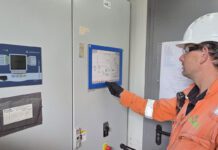
Too much storage area is being taken up for feedstock storage at AD plants, according to one designer and manufacturer of precast concrete elements for retaining and storage structures.
Yorkshire-based Whites Concrete says designs of some walls can take up far too large a footprint.
“On a particularly large site, this might not seem like a major issue”, said Stephen Casey, Project Engineer at Whites Concrete. “However, with plenty of AD operators already adding extra storage to their sites, space can soon be at a premium, so it seems unwise to create a problem that can so easily be avoided”.
Casey pointed to a recent example where a customer enquired about a 48 metres storage width. To achieve this, his plans showed an overall construction width of 64 metres, using almost 35 per cent more in materials, costs and space.
“Everyone in the AD industry wants to put their green credentials to the fore”, he added, “but there should be far more thought for the long term about footprint, as well as its practicalities. Specification and positioning are crucial because you’ve got to plan ahead for the next couple of decades with your AD plant. In the short and long term, disproportionate design will make a dent in your investment”.
Casey also pointed to the design of feed clamps, adding: “Of course design depends very much on the types of feedstock, but with digesters often requiring significant volumes of silage, large capacities will be required. To meet this need, clamps up to 3m or 4m high can be built to give good compaction in a smaller area. Surely it is more economical all round to maximize your space and maximize the amount of gas produced”.






